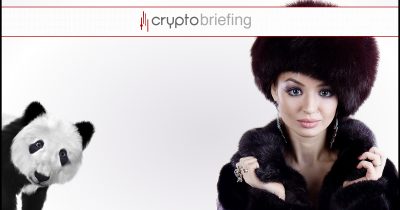Faux Fur Fury: Blockchain's Simple Solution

Share this article
“Faux Fur Fury” – a condition which sounds as though it might primarily affect elderly women and Italian designers – has its roots in a very real case in which “faux” fur turned out to be rabbit fur, and several others in which mink, raccoon, and rabbit furs were incorrectly labeled as faux.
This causes a very real PR issue, and the possibility of fines for retailers and textile manufacturers who either thought they could skate around the Fur Products Labeling Act (which requires truth in labeling for fur and faux fur clothing and accessories), or who were duped into believing their materials were PETA-proof.
The fact is, consumers increasingly demand the ability to make informed choices when buying clothing and accessories.
But Faux Fur Fury Can’t Compete With Child Labor For Headlines
You might remember that Ivanka Trump’s clothing line was recently yanked from several major clothing and fashion retailers due to the practice of outsourcing the manufacture of clothing to nations where the cost of labor is cheap. The main issue here revolved around the disconnect between the manufacturing practices used by this clothing line and President Trump’s push for American jobs and American-made products; and it highlights the benefits of a transparent supply chain, powered by the blockchain.
Such benefits will not be consumer-exclusive – they could extend to Ivanka Trump, her retailers, consumers, and, of course, the child laborers who’d less likely be exploited if there were no market for what they produce.
Blockchain For The Clothing Industry
A blockchain supply chain app could benefit consumers and make the jobs of overworked federal regulators and inspectors easier by providing a reliable “non-paper trail” of records that keep track of sourcing and routing information at each step in the chain.
A consumer could scan a QR code on a cotton shirt and see live-streaming video of the factory where it was manufactured, and the farm where the cotton was harvested. When the consumer can see whether the workers are happy and healthy without having to take someone’s word for it, then the consumer doesn’t have to rely on the manufacturer to tell the truth in order to make informed decisions.
The incentives for the textiles industry to avoid mislabeling its products are there: consumers will often pay more for ethical products and governments don’t fine companies that follow the law. Even when major brands might shrug off fines that aren’t high enough to disincentivize dishonest behavior, they will listen when consumers who care about making ethical buying decisions put down the shirt because it was made using slave labor.
Or, more often, they are forced to listen when ethical watchdog groups create a public relations problem for them. All publicity is not good publicity, and you have to wonder how much a negative article in Cosmo hurts the fashion-conscious i-Gens who constitute Forever 21’s dwindling audience.
When Textile Manufacturers Compete, Ethical Consumers Win
Wise textile manufacturers will gain a competitive edge by being the first to implement blockchain supply chain apps and educate their customer base about the benefit of having a transparent and secure supply chain.
Sometimes people don’t have much choice about where they buy clothes because they’re on a limited budget, but they might appreciate the option to choose the pillow that is made ethically and not in a foreign sweatshop. Even if the cotton in that pillow might have originally come from Brazil or Mali, and the manufacturer obtained it for a low price on commodity exchanges.
The biggest benefit for consumers is they’ll at least have the option of making the choice of what they’re willing to support (or not) when they can conveniently get the information
That, and freedom from the ongoing curse of Faux Fur Fury, of course.
Share this article
Trending News
